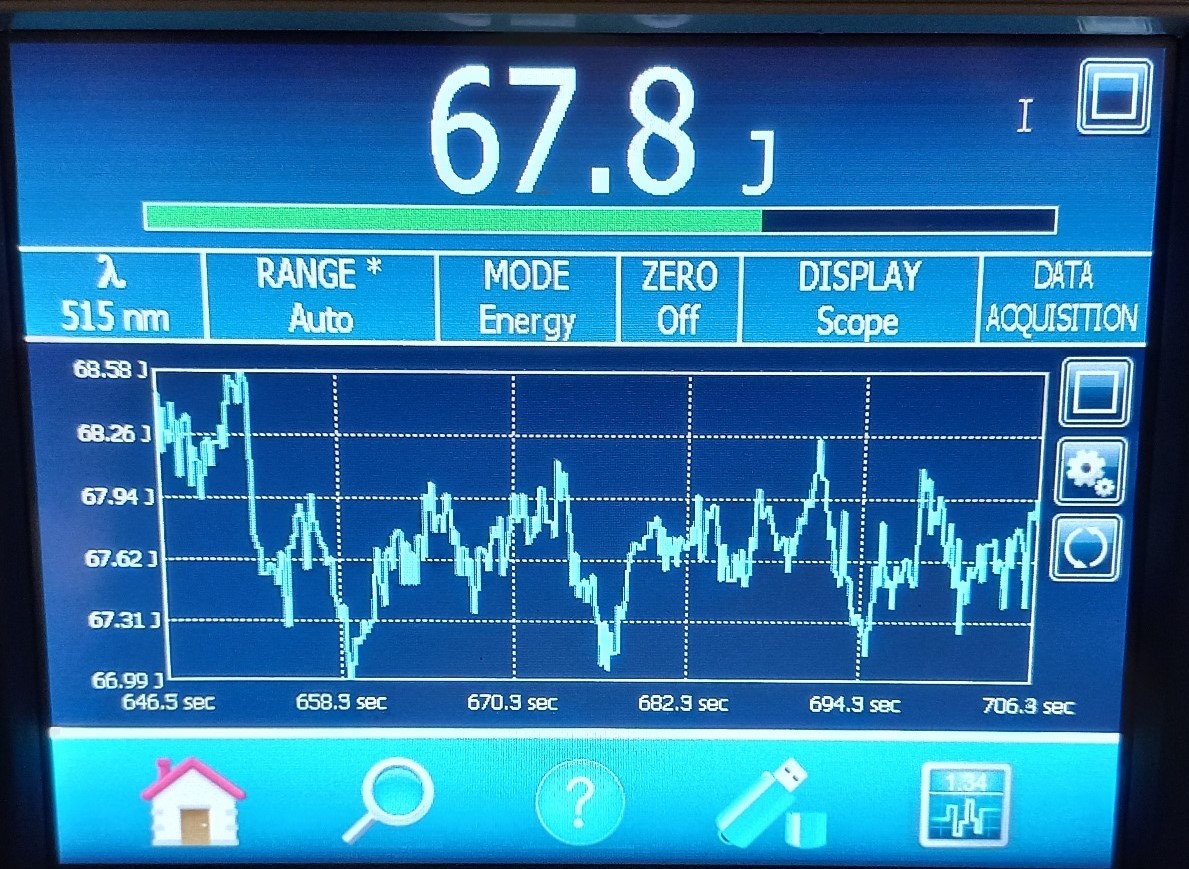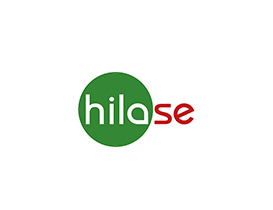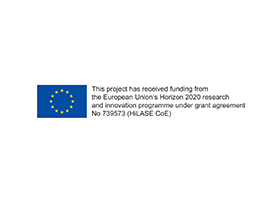We are happy to announce that the BIVOJ laser system is once again a record holder in its performance class. This is BIVOJ’s second world record this year and the third overall. Earlier this month the high energy output from BIVOJ was converted (via second harmonic frequency conversion) to 515 nm wavelength pulses with an energy of more than 68 J at a repetition rate of 10 Hz, which at the time of writing is the world’s highest average power in the category of high energy (>1 J), high average power lasers.
Scientists from the HiLASE Centre of the Institute of Physics of the Czech Academy of Sciences in collaboration with its British partner the Central Laser Facility, of the UK’s Science and Technology Facilities Council, converted pulses from the BIVOJ laser to second harmonic frequency (515 nm) with energy greater than 68 J at a repetition rate of 10 Hz. After thermal stabilisation of the LBO conversion crystal after a few minutes, the converted energy dropped to 62 J due to in-homogeneous heating of the crystal. „Both values represent a new world record in its class. What is really exciting is that we expect even this record to be broken again soon as the BIVOJ laser was only operating at 75% of its potential output power,“ comments Team Leader of High Energy Slab Lasers, Martin Divoky.

The BIVOJ laser system, a pulsed nanosecond diode-pumped solid-state laser, is classified as a powerful high energy class kW laser and utilizes a cryogenic cooling technology to achieve high average power output. At the end of January 2021, the BIVOJ laser system broke its own record set in 2016, when it consistently achieved an energy of 146 J at 10 Hz, almost 40% higher than the previous record.
„Congratulations to Martin Divoky’s team for another world leading success. It is evident that diode-pumped high power lasers with cryogenic cooling of the BIVOJ type open up interesting possibilities for new laser applications, e.g. for underwater processing of materials, optical pumping of amplifiers of ultraintense laser systems and even for basic research on the laser-mass interaction “ says Tomas Mocek, head of HiLASE Centre. He adds: „I am already looking forward to the results of future user experiments on green (515 nm). Our further research and development of the BIVOJ laser system will focus on improving the quality of the beam wavefront using adaptive optics methods and on compensating for the undesirable depolarization phenomenon arising at high powers in disk amplifiers”.
















